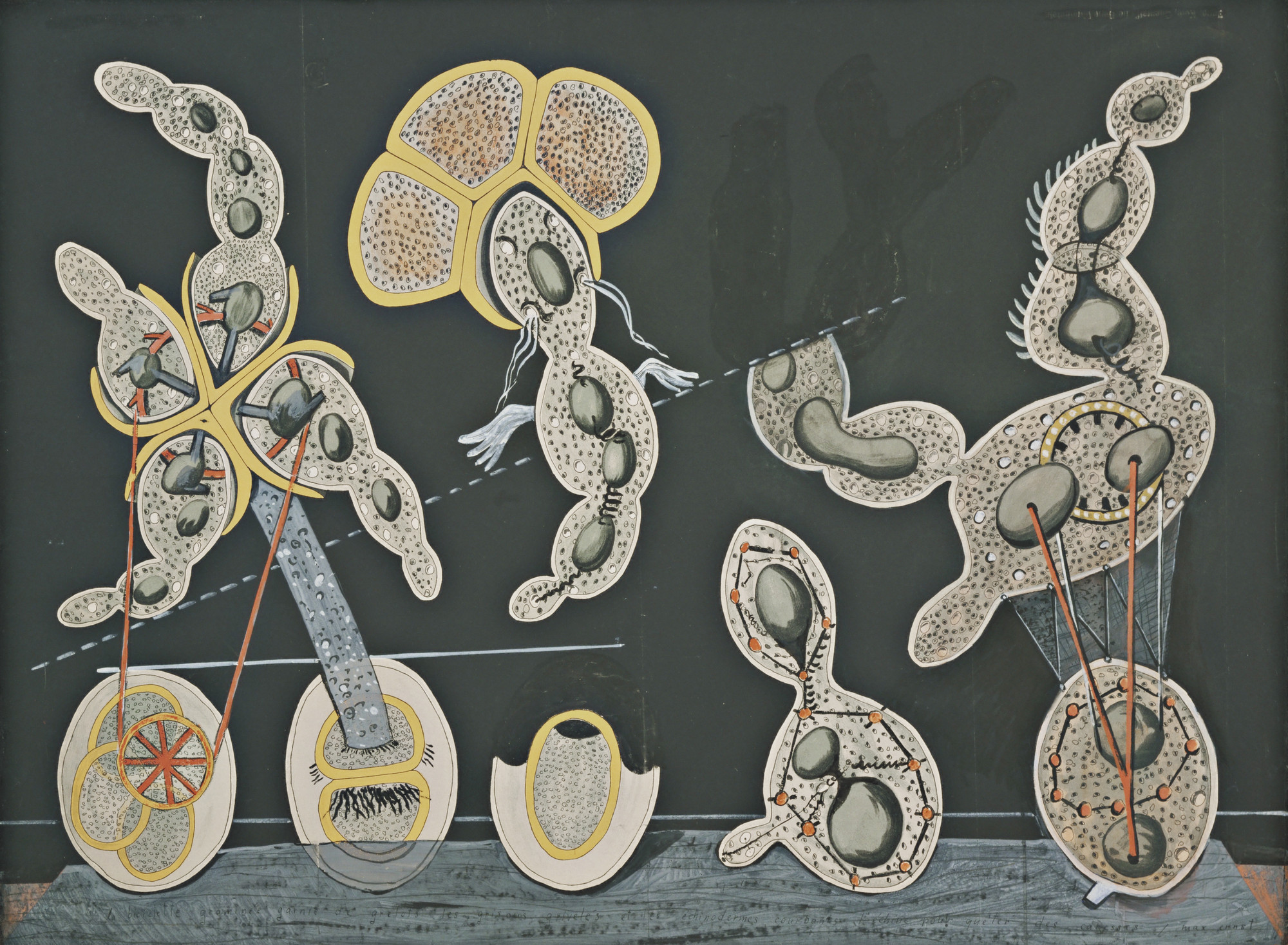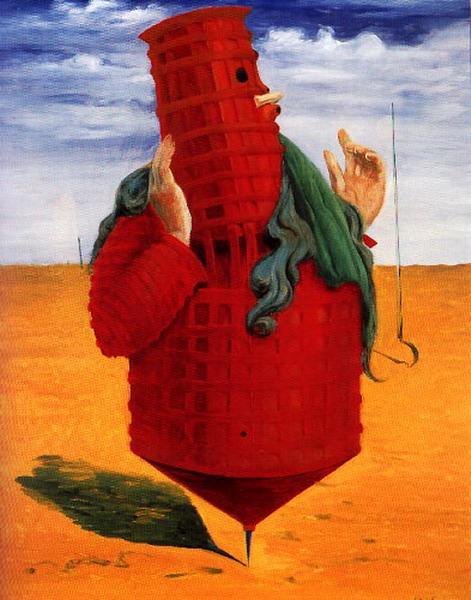Max Ernst
Max Ernst was a German artist of the early 20th century and one of the primary pioneers in Dadaism and Surrealism. Ernst had a rollercoaster of a life involving a threesome, many collaborations with other artists, and a constant experimentation when it came to his art style. Some characteristics of his paintings were bright, solid colours, surrealistic landscapes, and a bird-creature alter ego he called Loplop (Fig. 1). During World War I, he was forced to join the German army. His experiences became an inspiration for a lot of his art, mixed with a little humour.
Personally, I think Max Ernst was a pretty wacky guy. I love that he didn’t settle for one style or category of art, but chose to explore his abilities in all directions. My favourite piece of his is L’Ange do Foyeur (Fig. 2) which features a frightening yet humorous Loplop. It’s truly something someone might see in a weird/scary dream, which captures the spirit of Surrealism very well.
Figure 1: Loplop Introduces Loplop, 1930

Figure 2: L’Ange du Foyeur, 1937

The Gramineous Bicycle Garnished with Bells the Dappled Fire Damps and the Echinoderms Bending the Spine to Look for Caresses, 1921

Ubu Emerato, 1923
–
Works Cited
https://en.wikipedia.org/wiki/Max_Ernst
http://www.max-ernst.com/
Mikaela,
Nice work on Klimt and Ernst! Some good research combined with personal feelings and opinions. Keep it up.
Jeff